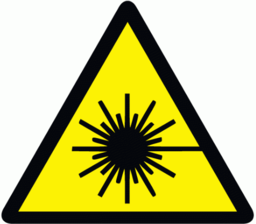Product | 11/20/2018
Ledger Donjon Wins the Kudelski Crypto Challenge: Behind the scenes (1/3) - One Fault is Enough to Break EdDSA
This post is part of a series of 3 where we will give our solutions to the Kudelski CTF. In this post, we give our solution on the first challenge.
Kudelski organized a Capture The Flag (CTF) during last summer. The prize was very attractive:
A Ledger Nano S with 100 USD in Ethereum!
Kudelski CTFs are very interesting, challenging and cryptography related. At Ledger, we have the Donjon team which evaluates the security of our products, hardening them and doing security research. Our areas of expertise include Side Channel Attacks, Fault Attacks and Software Attacks on various architectures.
Even though we were quite busy this summer, we found time to try to attempt the CTF. They were quite difficult, thus we are very proud to have solved them. Furthermore, we were the first to do this and we won the CTF!
We could sadly not attend DEFCON this summer, but for winning the CTF, Kudelski has sent us our precious device 🙂

We would like to thank Kudelski for this very smooth organization of this great challenge. Kudelski asked us to prepare a write-up explaining how we solved the challenges. You’ll find below how we solved them.
Buckle up your security belt, it’s going to be slightly technical…
After having reversed the code, we assumed that the algorithm used to generate the signature is EdDSA. The symbols were still present in the binary. The functions were renamed in order to add a bit of obfuscation.
This was a fault attack on EdDSA and as Kudelski released a paper about it called Practical fault attack against the Ed25519 and EdDSA signature schemes, we assumed this problem was about implementing one of the attacks presented in the paper.
EdDSA is one of the variations of the ECDSA algorithm, with a small difference. Whilst in ECDSA the nonce is computed randomly, in EdDSA the nonce is deterministically computed from the message and the private key. It means that the two correct signatures of the same message will be the same. Firstly, we have found the correct signature by trying to verify all the given signatures.
For example, when requesting the server to sign the message 000000, we obtain several signatures:
fe1f44347edb2f3561c4a04ef723d26937329e72a9e7d85a39c2f081b09f8e29a086c6dad6c6d3a9d235d2b5ece309797e4490a91c01c5396dc14a7291e1de04
ca885d387ccbb150663f1580b87294849ed1cbb393aad52ced8d9f9f005f0a13cdb22ecaf52db824052ac30c0d1fce5bbb65a05b219cc589838f4884508b2603
de923abb6d8308a29b1860e3f8467cc67a9ba3684761e4ae0853f3ba34ee658664388775a5584957c4bbcc656f0725b922f25e354b480a7a80b3e98f8b9bcf02
be5949a990b337d875dc9bf904a7bf0783b2e6b5f27a87b2777fbcd9dd43235c49265ab132bd58f7721a7f68edd9c0da6614da469f32234473a824198fcdd909
de923abb6d8308a29b1860e3f8467cc67a9ba3684761e4ae0853f3ba34ee658664388775a5584957c4bbcc656f0725b922f25e354b480a7a80b3e98f8b9bcf02
fe1f44347edb2f3561c4a04ef723d26937329e72a9e7d85a39c2f081b09f8e29a086c6dad6c6d3a9d235d2b5ece309797e4490a91c01c5396dc14a7291e1de04
fe1f44347edb2f3561c4a04ef723d26937329e72a9e7d85a39c2f081b09f8e29a086c6dad6c6d3a9d235d2b5ece309797e4490a91c01c5396dc14a7291e1de04
One can see that one signature appears several times, which probably means it is the ‘correct’ signature. Querying the server for verification shows that indeed fe1f4434...is a valid signature, whereas the others are faulty ones.
As we know, the DFA attacks on EdDSA could influence either one part of the signature (S), or two (both R and S). R corresponds to the first half of the above signatures, and S to the second half.

Because the faulty signatures for the same message differ in both, R and S, we assumed that the fault could have occurred either during the computation of hash line 4, or during the point multiplication line 5.
A fault on line 4 affecting rduring the whole signature would not lead to an easy recovery of the private key, unless the difference with the expected hash value can be bruteforced. Therefore we tried the simpler option of a transient fault during line 5, which affects ‘R’, and yields the private key with only a little bit of arithmetic.
To get the key, we only need to solve the equation taken from the algorithm

where S and and S’ are known from the two signatures, t and t’ could be computed from
where R and R’ (faulty signature) are known from the signatures, A is the public key, m’ is the message.
The private key ‘a’ equals (S-S’).(t-t’)⁻¹ in this case. Solving the equations for two signatures, faulty and not, we got the key. This information is enough to sign the required message for the challenge.
The flag is: CTF{cryp70 15 n07 cryp70curr3ncy}
The code can be found in our Github.
Stay tuned for the challenge #2.



































